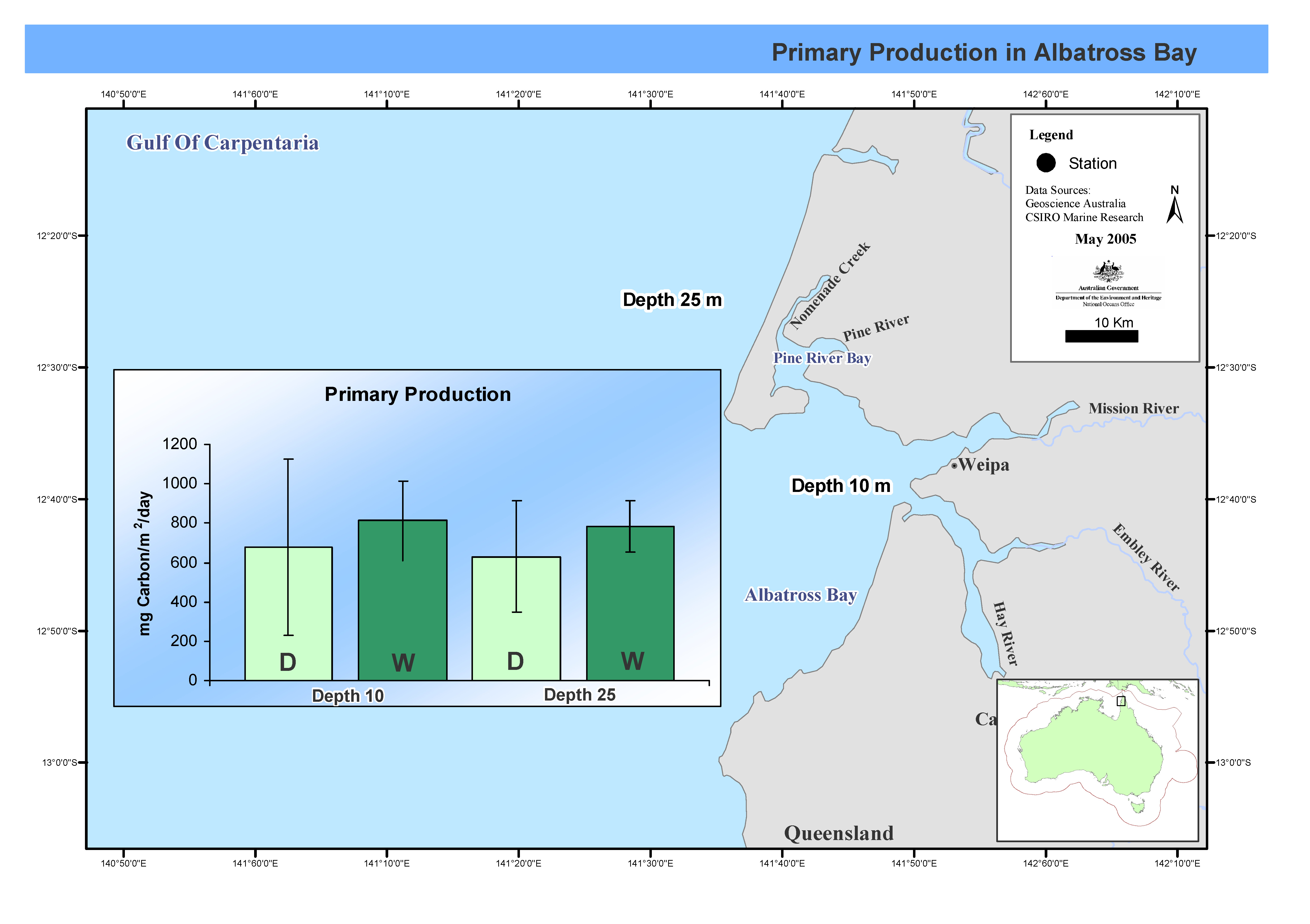Keyword
Ship: Jacqueline D
8 record(s)
Type of resources
Topics
Keywords
Contact for the resource
Provided by
Formats
Update frequencies
Status
draft
-
This dataset series comprises fish species composition data collected during the trawl and bottom sediment survey carried out in April 1985 and April 1986. This data was collected and used to compare fish abundance for this region with the pre-trawling surveys done by Munro between 1963 and 1965. Sediment samples were collected during the 1986 survey.
-

his map shows C14 primary productivity incubations at two stations over seven cruises in Albatross Bay during both the wet and dry seasons. Between February 1988 and February 1992 the FRV Jacqueline D completed nine cruises, seven in summer, two in winter, in Albatross Bay in the north-east Gulf of Carpentaria. Two stations, one 10m deep, the other at 25m, were sampled. Mean chlorophyll levels and primary productivity in the water column were measured. This map has been produced by CSIRO for the National Oceans Office, as part of an ongoing commitment to natural resource planning and management through the 'National Marine Bioregionalisation' project.
-
Nutrients in Albatross Bay, Gulf of Carpentaria, northern Australia, were examined monthly between August 1991 and April 1992. Levels of nitrate, nitrite, phosphate and silicate were measured, at four sites, at different depths in the water column.
-
Phytoplankton pigment composition (chlorophyll a concentration) was measured in Albatross Bay, Gulf of Carpentaria, northern Australia. Four sites were sampled over six years between August 1986 and April 1992. In the last two years samples were taken at the bottom of the water column in addition to mid-depth.
-
The biomass and species composition of tropical phytoplankton in Albatross Bay, Gulf of Carpentaria, northern Australia, were examined monthly for six years between March 1986 and April 1992. Phytoplankton taxonomic groups were identified to genus level, and described as dominant, common or rare. Refer to the cited publication for detailed methodology.
-
The biomass and species composition of tropical zooplankton in Albatross Bay, Gulf of Carpentaria, northern Australia, were examined monthly for three years between March 1986 and March 1988. Zooplankton taxonomic groups were identified to species level where possible, with a primary focus on copepods. Abundance data are assumed to be numbers per cubic metre, but this has yet to be confirmed. Sampling occurred across 5 sites (Site 1 = Inshore, Site 5 = Offshore, Sites progressed westward). Temperature and salinity were also recorded for many samples (see https://marlin.csiro.au/geonetwork/srv/eng/catalog.search#/metadata/bc1b3741-e267-5039-e044-00144f7bc0f4).
-
Between February 1988 and February 1992 the FRV Jacqueline D completed nine cruises, seven in summer, two in winter, in Albatross Bay in the north-east Gulf of Carpentaria. Two stations, one 10m deep, the other at 25m, were sampled. Mean chlorophyll levels and primary productivity in the water column were measured.
-
7, four- to five-day cruises were undertaken using the vessel "Jacqueline D" in Albatross Bay, Gulf of Carpentaria between August 1986 and November 1988, using a random stratified trawl survey to measure fish species composition and abundance. Four depth zones between 7 and 45 m were sampled during both day and night. Approx. 890,000 fish of 237 species were collected, of which the bulk were made up of 25 species. The dominant families were Leignathidae, Haemulidae and Clupeidae, with Sciaenidae and Dasyatidae important at night. Leiognathus bindus was the most abundant species, while Caranx bucculentus was the most frequently caught (96% of all trawls). The suite of fishes was separately analysed for occurrence of prawn predators.
